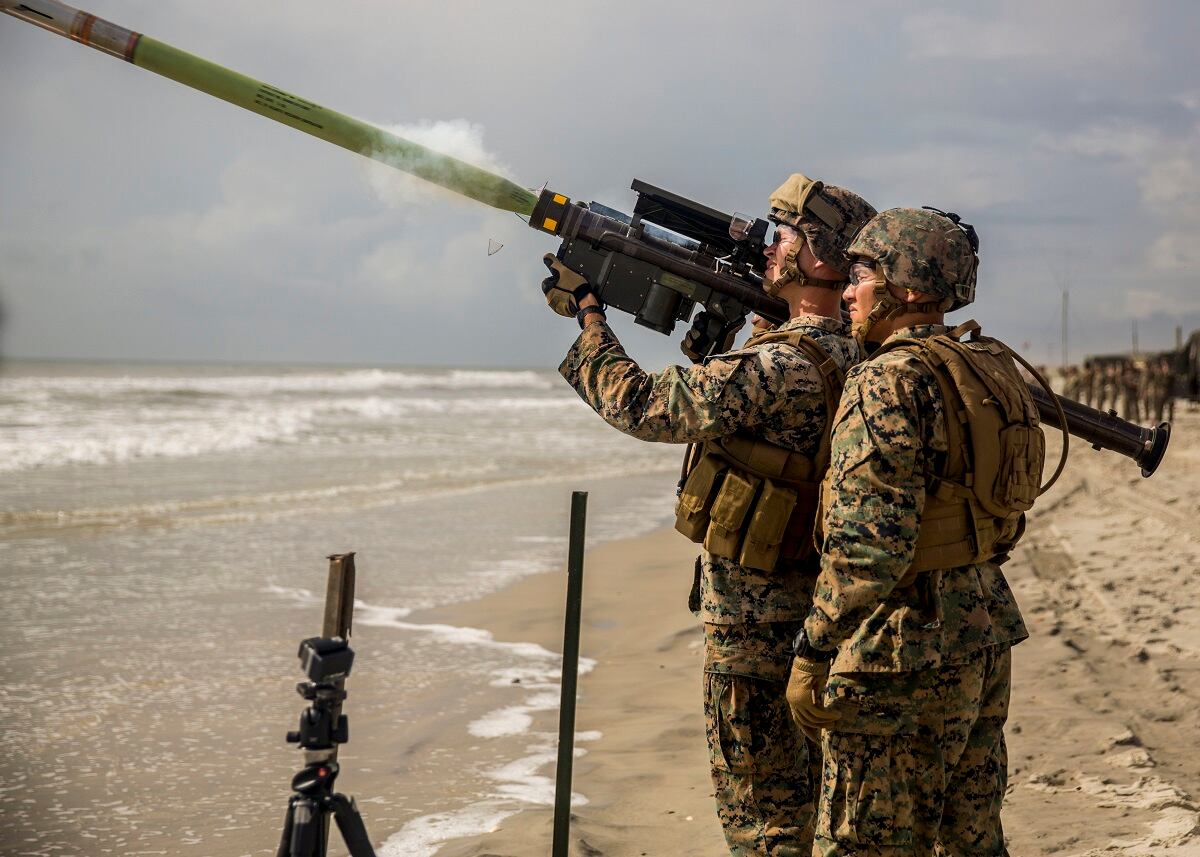Starting next year, counter-drone tech for the Marine Corps’ newest ground vehicle and an advanced radar system that can track everything from toy drones to cruise missile will be hitting the fleet.
Marine Corps budget request documents sent to Congress outline funding that will see early increments of the Ground Based Air Defense system installed on at least 28 JLTVs and see a total of 13 Ground/Air Task-Oriented Radar systems fielded before the end of 2020.
The GBAD system is a combined detection and strike system used by fire units in low altitude air defense or LAAD battalions, which support the Marine Air Ground Task Force.
Right now, those LAAD Marines have to pair up and use binoculars to spot incoming threats and then launch a shoulder-fired Stinger missile to knock them out.
RELATED

With the GBAD, Marines can detect and launch the missiles from a variety of vehicles, from a Mine Resistant Ambush Protected All-Terrain Vehicle or M-ATV or smaller units can divide the equipment between two small off road vehicles like the MRZR for an even lighter footprint.
The first counter-drone iteration coming in 2020 for the Joint Light Tactical Vehicle will soon be followed by an increment in 2021 that will extend GBAD ranges and incorporate both kinetic (think missiles) and non-kinetic (think jammers and lasers).
The Corps spent $176 million in 2018 acquiring the GBAD and plans to spend nearly another $1 billion through 2024 buying the systems.
The GBAD can operate standalone, but by 2021 the Corps hopes to tie into the G/ATOR, an advanced radar system that replaces five systems that do everything from air defense to air traffic control to target acquisition and tracking.
They also want it to work with the Command Aviation Command and Control System, which helps all of the radar systems talk with each other and with tactical operations and command centers for a full-range, shareable operating picture.
Radars being replaced include the TPS-63 air defense; TPS-73 air traffic control; MPQ-62 short-range air defense; TPQ-46 counterfire target acquisition and UPS-3 target tracking radar systems.
That gives the Marine Expeditionary Unit better capability in one system than in a batch of slapped together systems that predate the G/ATOR.
The Corps bought 17 systems since 2015 with plans to procure another eight next year and in 2022, which completes the current plans for buying G/ATOR systems.
Todd South has written about crime, courts, government and the military for multiple publications since 2004 and was named a 2014 Pulitzer finalist for a co-written project on witness intimidation. Todd is a Marine veteran of the Iraq War.





